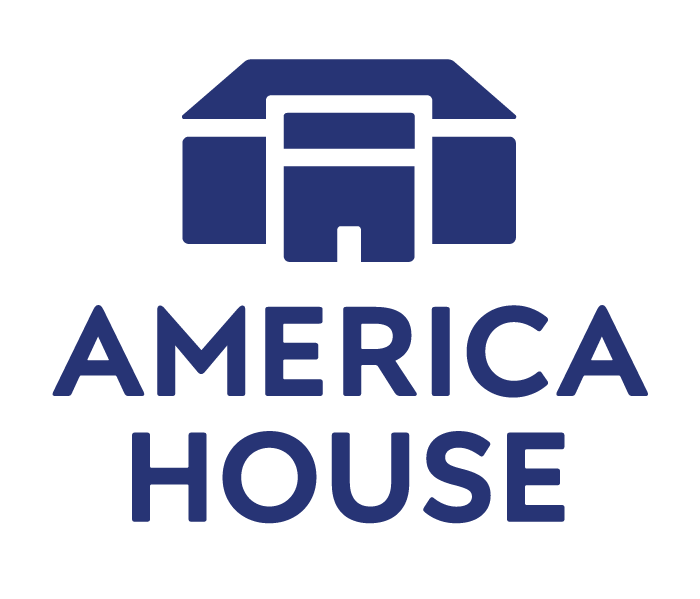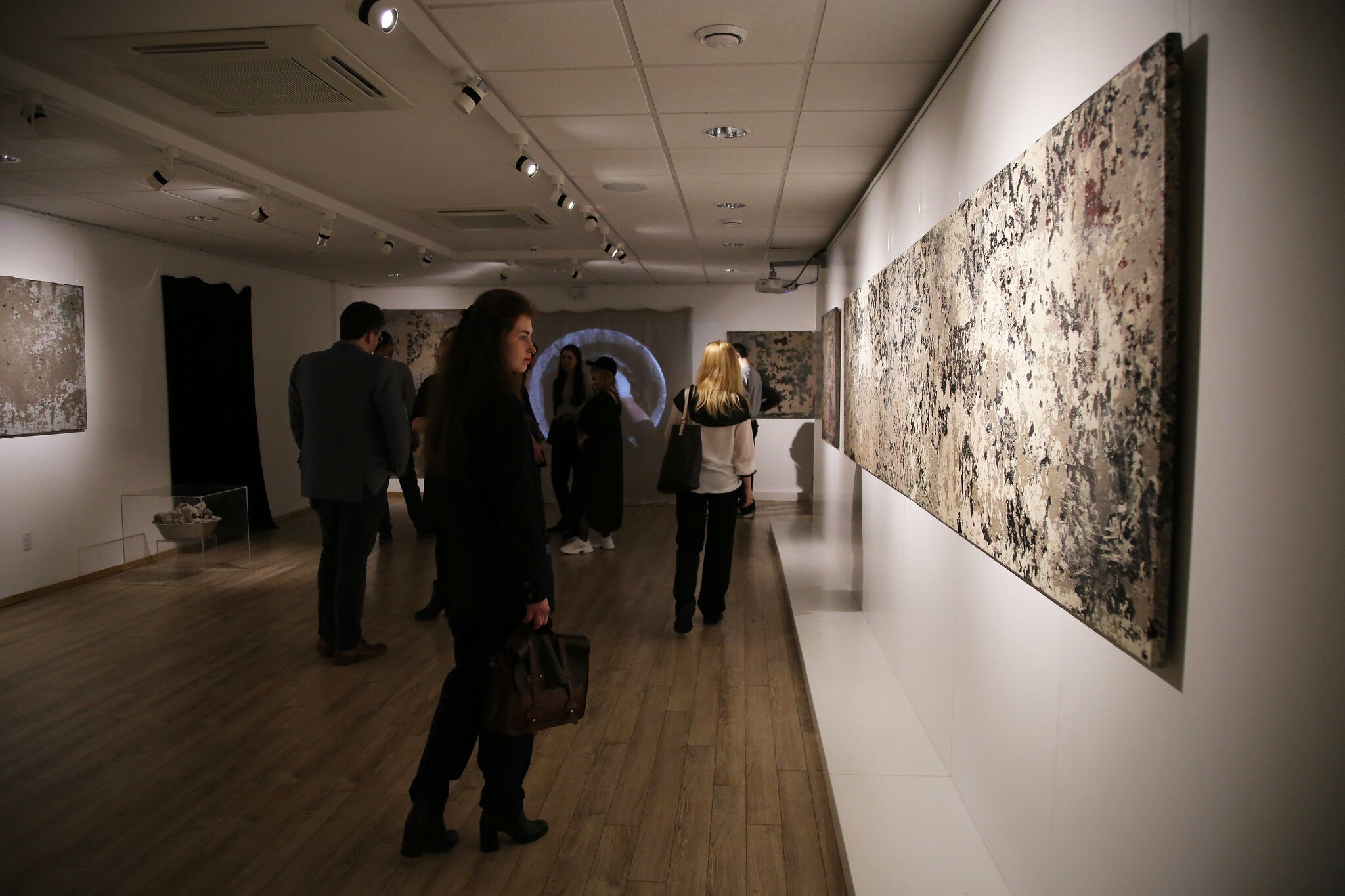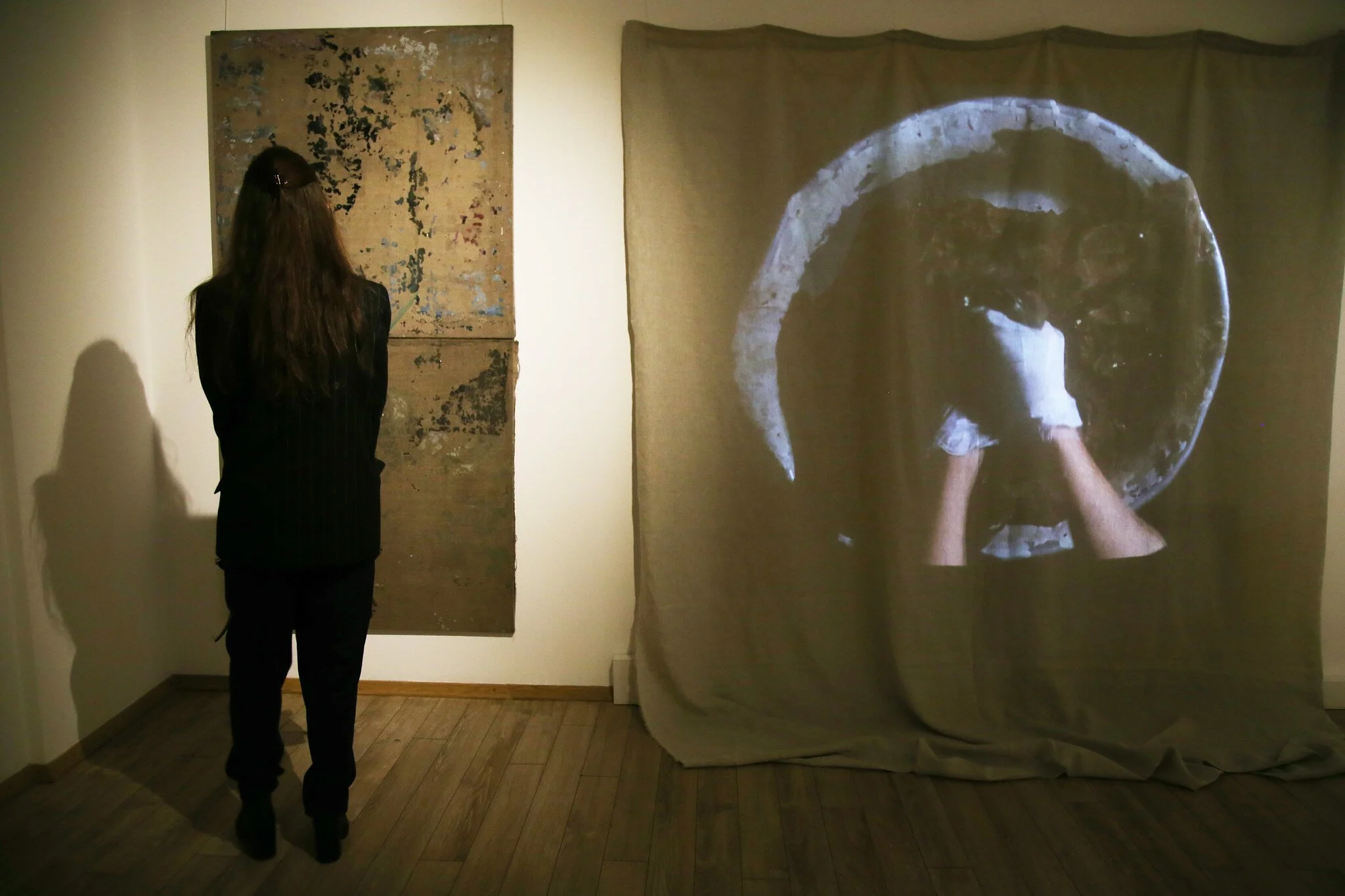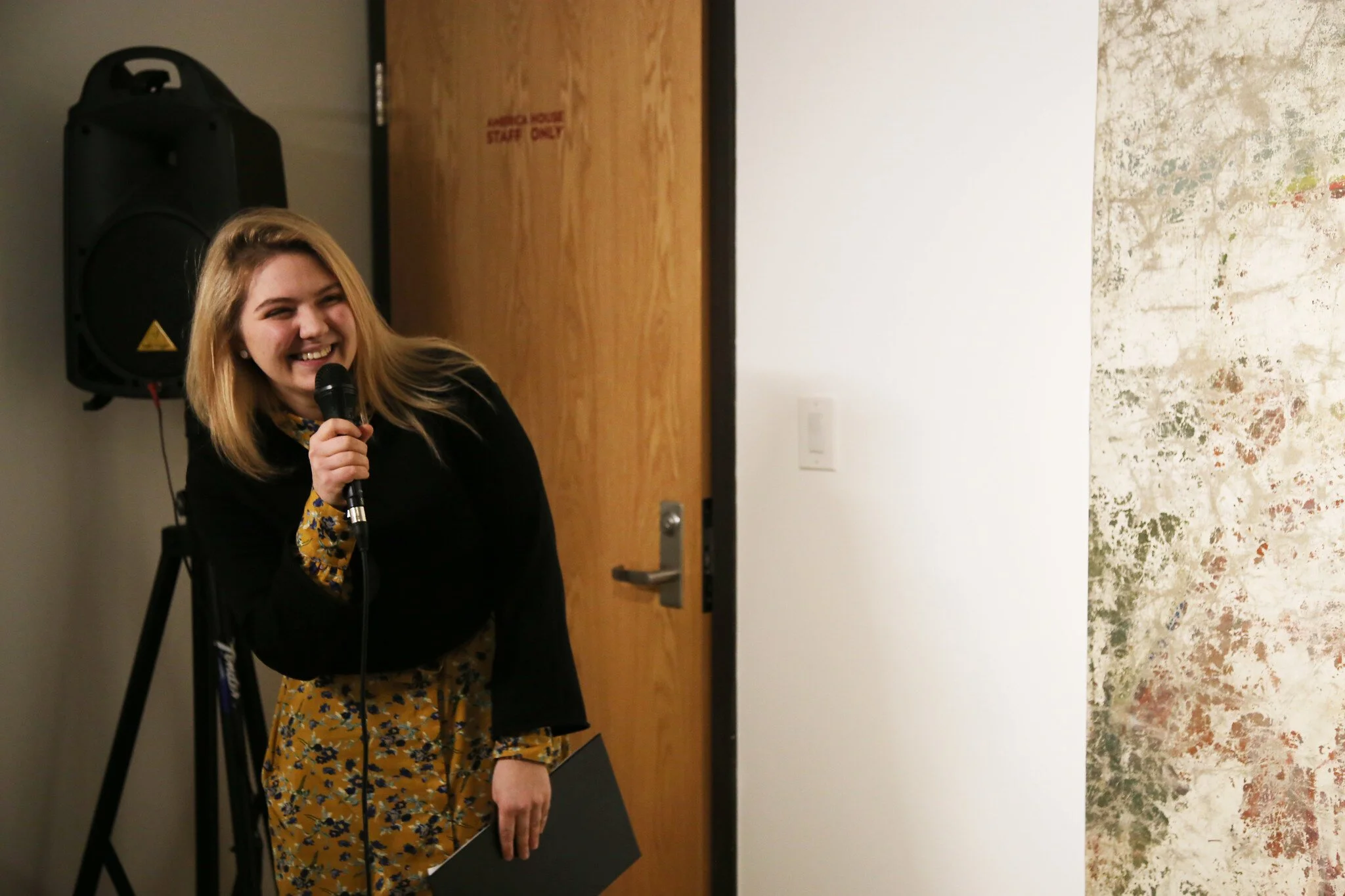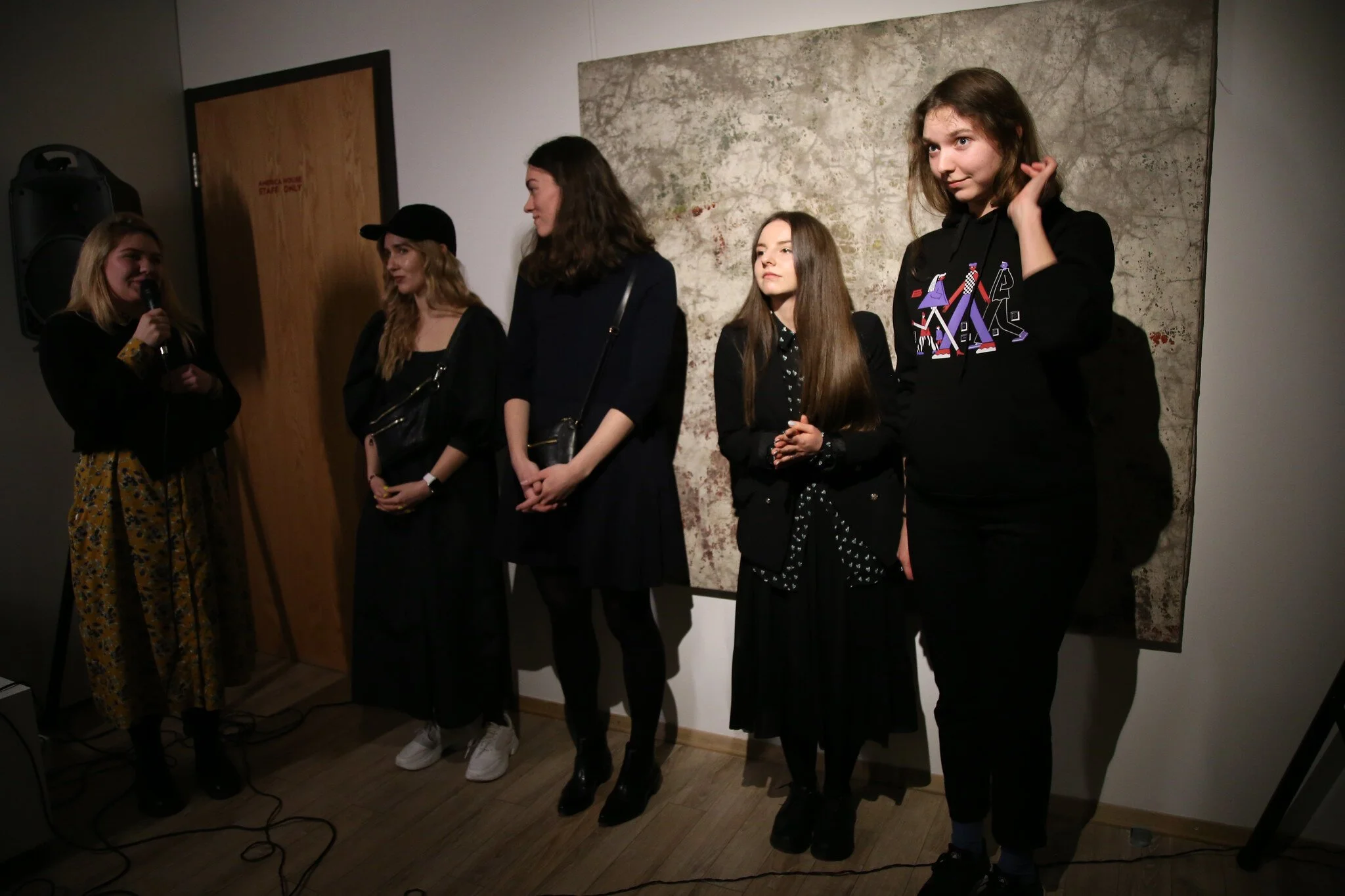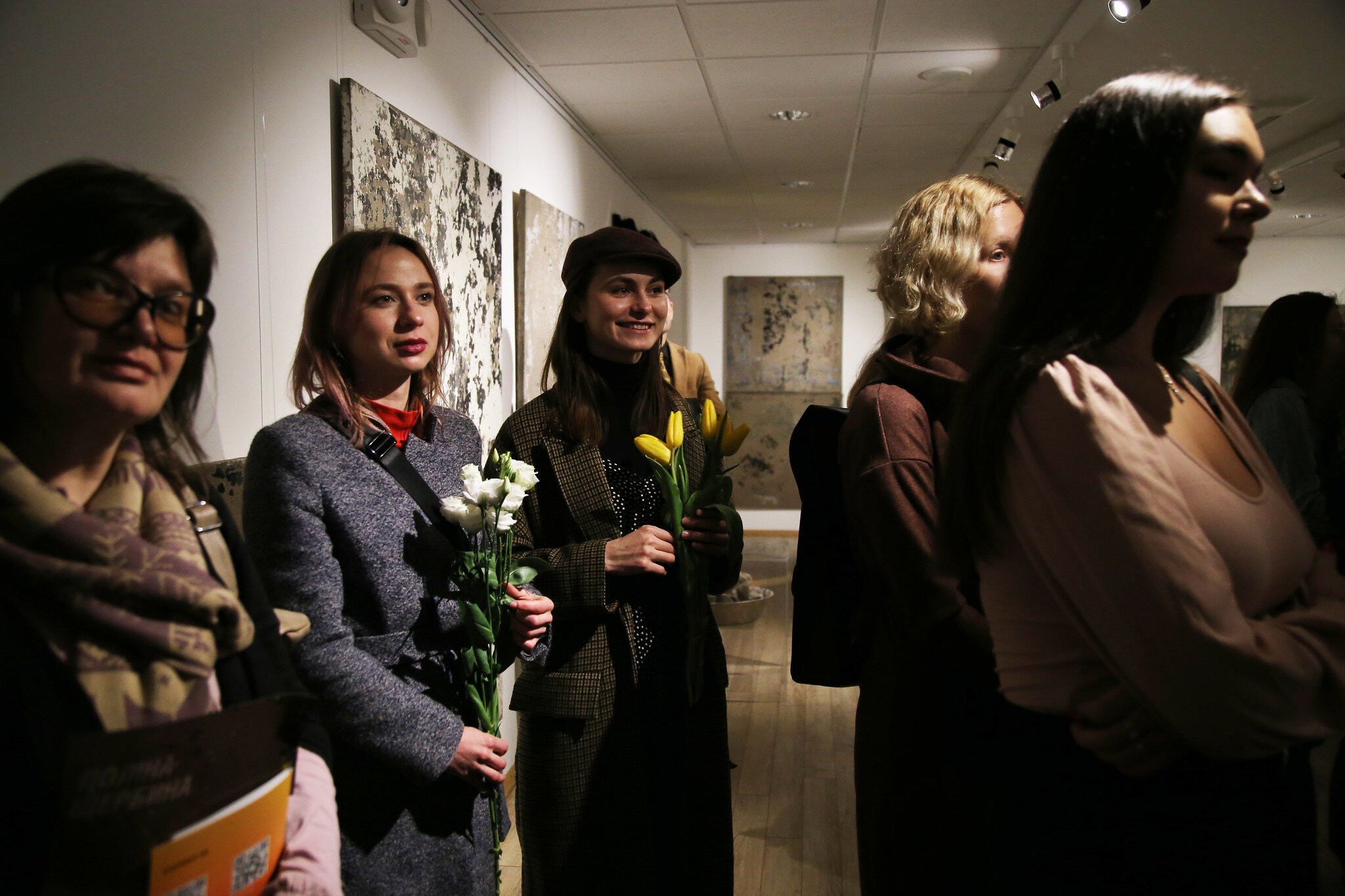Eliminated Archive
March 10 – April 2, 2020
Artist: Polina Shcherbyna
Curator: Kateryna Tsyhykalo
For an artist, a memory of past experiences is not just an full-body reminiscence, but it can serve as their loyal companion in the material world, for this experience is reflected on canvas, as well as in different stages of learning - all depicting the moments that have inspired the artist. But as time goes, this baggage turns into a burden, and an artist needs to rethink it, reform it, or just let it go. Earlier some artists simply burnt their works, others left them in workshops, and still others just threw them away. Polina Scherbyna uses another approach in her project “Eliminated Archive”. She chooses a “palimpsest” technique - a way in which old texts were erased from parchment and replaced with new ones once upon a time - and so do Polina’s old academic works. The process of eradication (washing) becomes a process of creation at the same time, because the final result shows new structures and ornaments on the washed canvas. This way, the story of the evolution of the canvas becomes its theme.
All of us have a myriad of objects, memories, and emotions carefully stored and guarded inside our hearts. Some of them are pushed out - unpleasant or unimportant and we replace them with joyful and exhilarating memories. For an artist, a memory of past experiences is not just an full-body reminiscence, but it can serve as their loyal companion in the material world, for this experience is reflected on canvas, as well as in different stages of learning - all depicting the moments that have inspired the artist. But as time goes, this baggage turns into a burden, and an artist needs to rethink it, reform it, or just let it go. Earlier some artists simply burnt their works, others left them in workshops, and still others just threw them away. Polina Scherbyna uses another approach in her project “Eliminated Archive”. She chooses a “palimpsest” technique - a way in which old texts were erased from parchment and replaced with new ones once upon a time - and so do Polina’s old academic works. The process of eradication (washing) becomes a process of creation at the same time, because the final result shows new structures and ornaments on the washed canvas. This way, the story of the evolution of the canvas becomes its theme.
Polina Shcherbyna:
“While studying at the academy, I was looking for my own place to concentrate, my own workshop/studio. Moving from one place to another, I always took all of my materials and paintings, although every time there were more of them and I needed to organize the space in order to fit them in.
Over time, the workshop got cramped and paintings were everywhere. Old oil paintings that remind me of my learning and the stages that I’ve gone through became a pile of memories, rolled onto the shelves and covered with dust. This experience demands transformation. I experiment with my paintings, check their durability, take them off the subframe and pour boiling water on them, finally leaving them rolled in for a night. In the morning, I wash them rubbing one part of the painting against the other. I scrub and destroy the layers of paint until the image is no longer recognizable. Everything that has fallen off is redundant. Everything that is left becomes a part of the new work.
Such an approach reminds of the “palimpsest”. This is a manuscript written on a parchment that has been used before. The old text is erased and the new one is written over it. In the past, it was an economical way to print and make books, because the parchment was rather expensive. But in this project, the magic is not in the layers, it’s in trying to get back to the source. Going back to the previous layers and up to the bare canvas, I leave the pieces of different layers of paint there.
That’s how I erase all the stories, textures and color balances created during various stages of my development as an artist. After I wash the painting, I see previous sketches and tears between the chunks of the pain still left of the surface. These tears symbolize the information that has been lost and can never be recovered. One can only guess what image may have been there. The peeling is a process of partial loss of information, it confuses all the shapes and colors and creates new combinations of spots that form a totally new composition.
Finishing it up, I pull the canvas back on the subframe and glue it with gelatin in order to record the history of its deformations. Thus, in my project, painting completely changes its aim and becomes an object that has lived its previous story to the end in order to be ready for something new.
About artist
Polina Shcherbyna is an artist from Kyiv. She was born in 1993. Her main mediums are painting and photography. In her works, she highlights routine actions and things that directly influence people’s lives, though they are not engraved in their consciousness as something significant, but they still leave one thinking about “real” and “reality”. During the last year, the artist focused on two groups of concepts: “oil painting, painting, artist” and “human being, reflex and reflection”. We can trace these concepts in her work. Polina often creates double-sided paintings. After covering them with paint, she starts technological processing: grinding, scrubbing, cutting etc. Thus, the artist discovers herself through the means of deforming the cover of the painting, the thing that has transformed itself into a ritual.
Polina has a Master’s degree in the National Academy of Art and Architecture and also studied art and temple culture in M. A. Storozhenko’s studio. While studying at the Academy, she actively participated in all kinds of creative activities and received a silver medal of National Academy of Art and Architecture in the painting competition in honor of Eleva and won the Anatoliy Kryvolap award in the category of oil painting. She has taken part in exhibitions in Ukraine, Czech Republic, New York and others.
Her first exhibition called “Li.FE beyond consciousness” took place in March, 2019 in the Art-Centre “MASLO” in Khmelnytskyi, Ukraine. She has taken part in Ukrainian and foreign fairs: KYIV ART FAIR/ Kyiv Art Week 2019 «This Is Not A Competition» and "NYA FAIR / New York Art Week 2019" TriBeCa. She is a member of NYA Gallery, New York since 2019.
About curator
Kateryna Tsyhykalo is an art critic, scholar, art-manager and co-founder of the media “VONO” (“IT”) about culture and art. She is also a researcher at Stedley Art Foundation and a manager at National Art Museum of Ukraine. Her scientific interests are centered on Ukrainian art of the 20th century and artworks of young contemporary artists.

